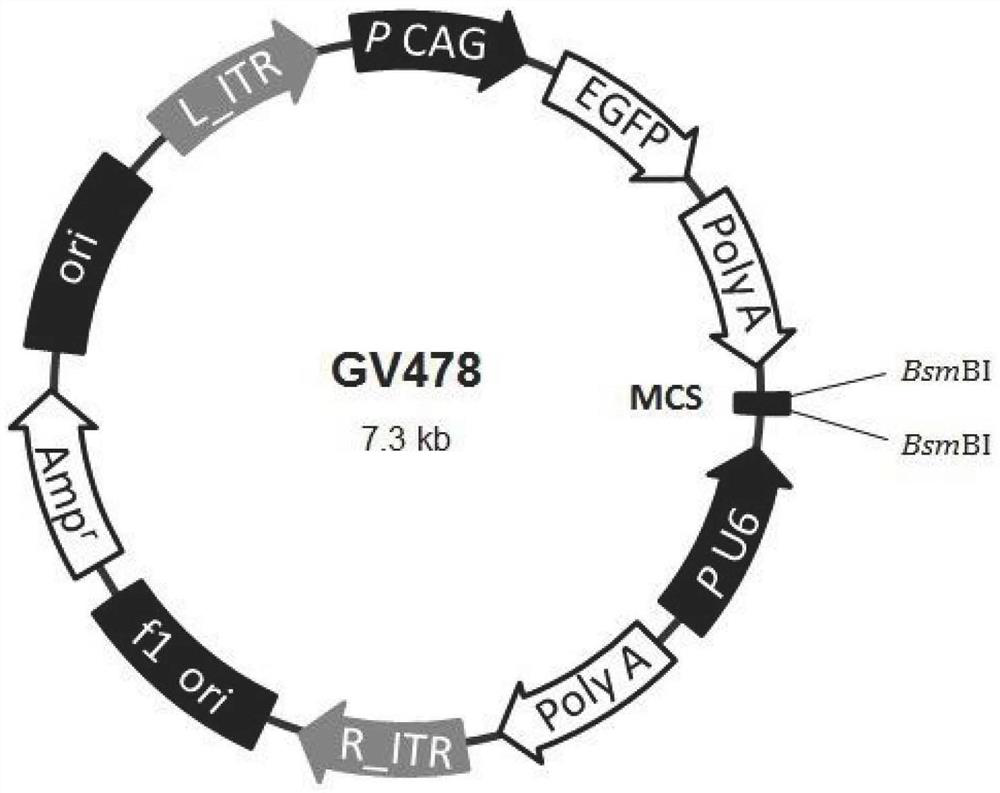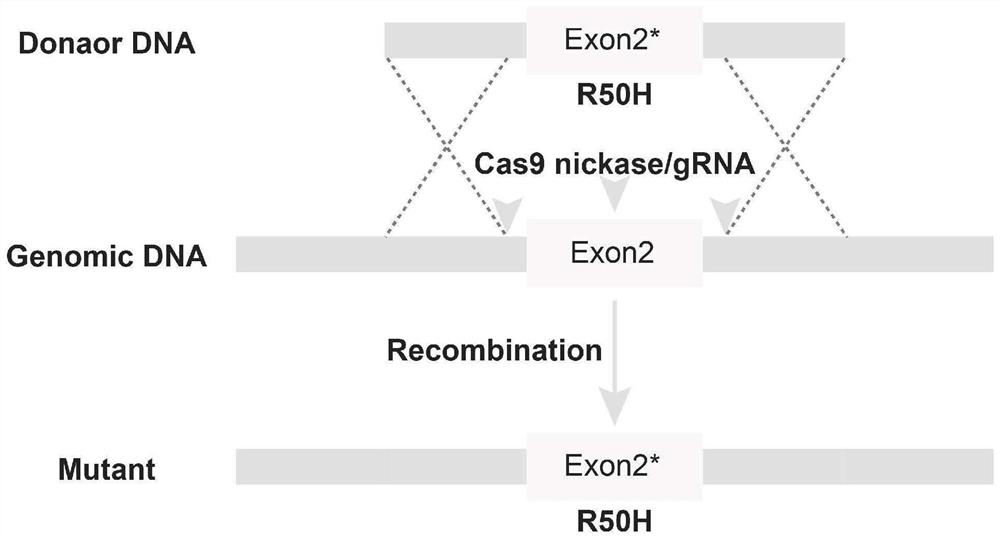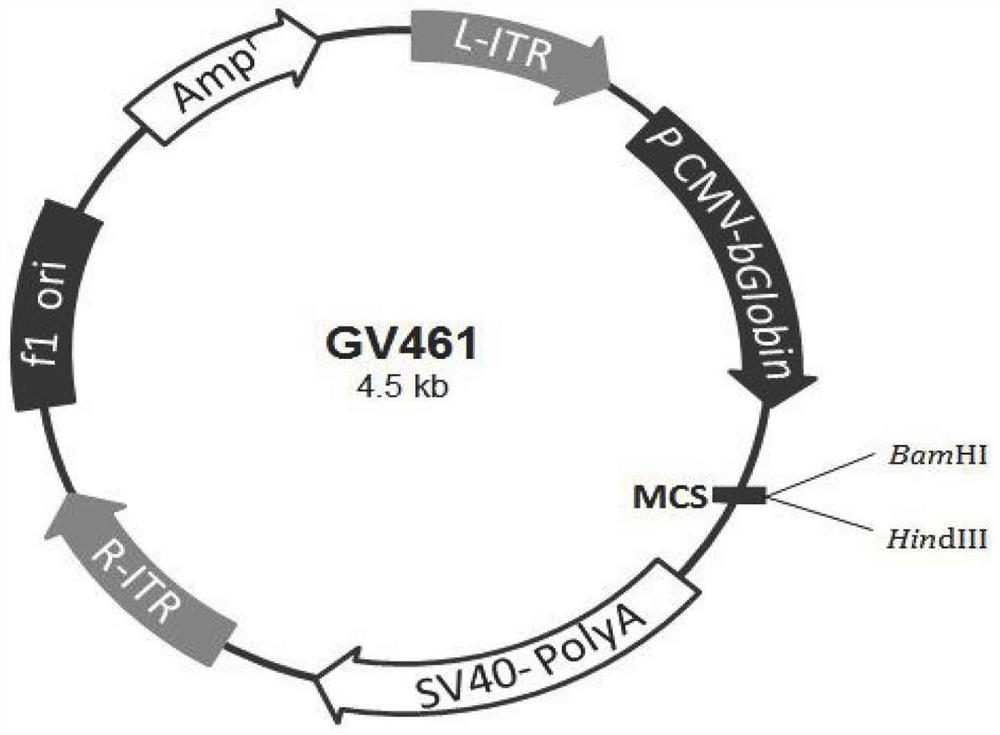Construction method and delivery system of plaque corneal dystrophy animal model and gene therapy vector
A technology of malnutrition and gene therapy, applied in gene therapy, plant gene improvement, botanical equipment and methods, etc., can solve problems such as new treatment methods have not been effectively developed, plaque corneal dystrophy, etc.
- Summary
- Abstract
- Description
- Claims
- Application Information
AI Technical Summary
Problems solved by technology
Method used
Image
Examples
preparation example Construction
[0030] The invention provides a preparation method for an animal model of plaque corneal dystrophy, comprising the following steps: knocking out the Chst5 gene of the animal corneal endothelium by means of anterior chamber injection or inserting the nucleoside at position 149 of the second exon of the Chst5 gene Acid is mutated from G to A.
[0031] The present invention does not specifically limit the type of the animal model, and it is preferably a mouse model. When constructing the mouse model in the present invention, the Chst5 gene involved is preferably a mouse source, and its gene accession number is NM_019950.
[0032] The present invention can realize the construction of a mouse model by a gene knockout method, and the knockout method preferably includes designing a shRNA sequence for the Chst5, and inserting the shRNA sequence into the BsmBI restriction enzyme cleavage site of the adeno-associated virus vector where an adeno-associated virus knockout plasmid was con...
Embodiment 1
[0040] Construction of a mouse model of plaque corneal dystrophy 1
[0041] The shRNA oligonucleotide sequence 5'-accggacgctgccctttgccaagattttcaagagaaatcttggcaaagggcagcgtttttt-3' of mouse Chst5 (NM_019950) was inserted into the BsmBI restriction enzyme cleavage site of the adeno-associated virus GV478 vector to construct an adeno-associated virus knockout plasmid (AAV-siChst5). The same plasmid was constructed using the sequence of SEQ ID NO. 8: 5'-cgctgagtacttcgaaatgtc-3' as a negative control.
[0042] 1 μL concentration of 10 12 VG / mL of the above adeno-associated virus knockout plasmid was injected into the anterior chamber of mice through the cornea using a 36G stromal injection needle ( Figure 4 ).
[0043] For the gene knockout effect, use the primers shown in SEQ ID NO.5 and SEQ ID NO.6 to perform PCR gene expression verification, and the results are as follows Image 6 As shown, endothelial knockout of Chst5 can be achieved by anterior chamber injection, and anter...
Embodiment 2
[0046] Construction of Plaque Corneal Dystrophy Mouse Model 2
[0047] The nucleotide G at position 149 of the second exon of the mouse Chst5 (NM_019950) gene was changed to A by CRISPR-Cas9. That is: TGGCGCTCG->TGGCACTCG.
[0048] The gRNA sequences of Chst5-g1: and Chst5-g2 were designed near the mutation position and screened by target activity detection. Donor DNA Chst5-g1-g2-Oligo was designed and constructed according to the highly active gRNA target.
[0049] The DNA of the target gene is cut by CRISPR technology, and the homologous template Donor with point mutation is provided at the same time, and the base replacement is realized in a specific exon through the homologous recombination repair of DNA to achieve the purpose of point mutation.
[0050] Cas9 nickase mRNA, Cas9 target gRNA and Donor DNA were co-microinjected into mouse zygotes. The mice were genotyped two weeks after they were born, and PCR was used to detect whether the first mice with gene point mutat...
PUM
 Login to View More
Login to View More Abstract
Description
Claims
Application Information
 Login to View More
Login to View More - R&D
- Intellectual Property
- Life Sciences
- Materials
- Tech Scout
- Unparalleled Data Quality
- Higher Quality Content
- 60% Fewer Hallucinations
Browse by: Latest US Patents, China's latest patents, Technical Efficacy Thesaurus, Application Domain, Technology Topic, Popular Technical Reports.
© 2025 PatSnap. All rights reserved.Legal|Privacy policy|Modern Slavery Act Transparency Statement|Sitemap|About US| Contact US: help@patsnap.com



